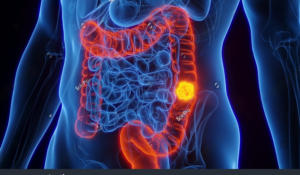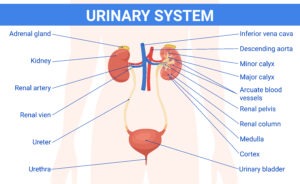What You Should Know About Cervical, Colon, Kidney and Liver Cancer
When did you first hear about cancer? We have seen movies, heard stories and read about cancer almost everywhere. Even our favourite actors and actresses have portrayed the role of a cancer victim in a movie. We may have even learned about a colleague, a friend, or a close relative being diagnosed with the disease, and always, our initial reaction is that of shock and pity. But when did it really occur to you how serious this disease is, and those who have them suffer a great deal, both physically and emotionally. We have been made aware about this fatal disease and that it can pick anyone, no matter what race, color, age or stature you have in society. Let’s know more about this feared disease and how it affects us physically.
Cervical Cancer
Cervical cancer is a malignancy of the cervix. All over the globe it is the 4th most common cancer in women. Scientists are studying cervical cancer to find out more about how it develops and they are looking at better ways to detect and treat it.
Cervical cancer sets in when cells in the cervix begin to grow uncontrollably forming a mass of extra tissue called a tumor. Malignant tumors are cancer cells, and can invade and damage adjacent tissues and organs. Cancer cells can also break away from a malignant tumor and enter the lymphatic system or the bloodstream. This is how cervical cancer spread to other parts of the body such as nearby lymph nodes, the rectum, the bladder, the bones of the spine, and the lungs. Spreading of the cancer is a process.
Cancer of the cervix is different from cancer that begins in other parts of the uterus and requires different treatment. Most cervical cancers are squamous cell carcinomas. Squamous cells are thin, flat cells that form the surface of the cervix. The second most common form is adenocarcinoma which comes from cells that make up glands in the cervix.
Cancer of the cervix may present vaginal bleeding but symptoms may be absent until the cancer is in advanced stages, which has made cervical cancer the focus of intense screening efforts utilizing the Pap smear. Most scientific studies have found that human papillomavirus (HPV) infection is responsible for ninety percent of the cases of cervical cancer. HPV is a sexually transmitted disease that is incredibly common in the population. HPV is the virus that causes genital warts, but having genital warts doesn’t necessarily mean getting cervical cancer. There are different subtypes, or strains, of HPV and only certain subtypes are likely to cause cervical cancer, and the subtypes that cause warts are unlikely to cause cervical cancer. However, almost all cancers of the cervix have evidence of HPV virus in them, so infection is a major risk factor for developing it. Because infection with a sexually transmitted disease is a risk factor for cervical cancer, any risk factors for developing sexually transmitted diseases are also risk factors for developing cervical cancer. Another important risk factor is smoking; smokers are at least twice as likely as non-smokers to develop cervix tumors.
Symptoms of the disease may not appear during the early stages of the cancer that is why it is important to have screening Pap tests. When the tumor grows in size, it produces a variety of symptoms including abnormal bleeding (including bleeding after sexual intercourse, in between periods, heavier/longer lasting menstrual bleeding, or bleeding after menopause), abnormal vaginal discharge (may be foul smelling), pelvic or back pain, pain on urination, blood in the stool or urine. Although having these symptoms may not mean that you have cervical cancer, it is always best to consult with your doctor once you experience any of these problems. If cervical cancer is detected early, it can be treated without impairing fertility.
Colon Cancer
Globally, colorectal cancer also called colon cancer or bowel cancer is the third leading cause of cancer. In 2020 there were 1.9 million new cases. It is the 3rd most common cancer in men and 2nd most common cancer in women. The frequency of colorectal cancer varies around the world; it is common in the Western world and rare in Asia and Africa. In countries where people have adopted the western diets has an increasing incidence of colon cancer.

The colon also known as the large bowel is the longest portion of the large intestine. The large intestine is the last part of the digestive tract, which is a tube that is about five to six feet in length; the first five feet make up the colon which then connects to about six inches of rectum, and finally ends with the anus. About three to eight hours after eating, by the time the food reaches the colon, the nutrients have been absorbed and the remainder is liquid waste product. The colon functions as a converter, changing this liquid waste into stool. The stool can spend anywhere from ten hours to several days in the colon before being expelled through the anus. It has been advised but not proven, that the longer the stool stays in the colon, the higher the risk of colon cancer.
Colon cancer includes cancerous growths in the colon, rectum and appendix. Many colon cancers are thought to arise from adenomatous polyps in the colon. These mushroom-like growths are usually benign, but some may develop into cancer over time. This process can take years which allow time for early detection with screening tests.
Symptoms
Symptoms of colon cancer are numerous and non-specific. They include fatigue, weakness, shortness of breath, change in bowel habits, narrow stools, diarrhea or constipation, red or dark blood in stool, weight loss, abdominal pain, cramps, or bloating. Other conditions such as irritable bowel syndrome (spastic colon), ulcerative colitis, Crohn’s disease, diverticulosis, and peptic ulcer disease can have symptoms that mimic colorectal cancer. Most often, these symptoms are not due to cancer, other problems can cause the same symptoms, so checking with your doctor should be done immediately to be diagnosed and treated as early as possible.
The risk of colon cancer rises substantially after the age of fifty, but every year there are numerous cases reported in younger people. Individuals with a personal or family history of colon cancer, polyps, or inherited colon cancer syndromes (i.e., FAP and HNPCC), as well as patients with ulcerative colitis or Crohn’s disease, are all at higher risk and may require screening at an earlier age than the general population. A person with one first degree relative (parent, sibling or child) with colon cancer is two to three times as likely to develop the cancer as someone who does not have an affected relative.
The treatment depends on the staging of the cancer. When colon cancer is caught at early stages (with little spread) it can be curable. However when it is detected at later stages (when distant metastases are present) it is less likely to be curable. Surgery remains the primary treatment while chemotherapy and/or radiotherapy may be recommended depending on the individual patient’s staging and other medical factors.
Kidney Cancer
Kidney cancer, also known as renal cancer is the 14th most common cancer worldwide. At present, the causes of kidney cancer are not well understood and can seldom be explained why one person gets the disease and another doesn’t. Many factors are linked with the increased probability of kidney cancer; one major risk factor is cigarette smoking. Smokers are twice likely to get the disease more than non-smokers.

Renal cell carcinoma, also known as gurnistical tumor, is the most common form of kidney cancer arising from the renal tubule, and the most common type of kidney cancer in adults. The most common warning sign or symptom of this disease is blood in the urine. In some cases, the person can actually see the blood. It may be there one day and not the next. A urine test done as a part of regular checkup called urinalysis may also find traces of blood in the urine. Another symptom is lump or mass that can be felt in the kidney area. The tumor may cause a dull ache or pain in the back side. Symptoms may develop abruptly. However, as with other cancer types, kidney cancer can cause a general feeling of poor health. Weight loss, fever, feeling very tired, and loss of appetite can be some more symptoms felt by someone with the disease. Though most often, these symptoms do not mean cancer. Other conditions may be causing the symptom that is why consulting a doctor is best advised when one experiences any of these problems.
To diagnose a kidney cancer, the patient’s personal and family medical history is taken and a thorough physical examination is conducted. The doctor usually orders blood and urine tests and may do one or more of these exams:
IVP (Intravenous Pyelogram) is a test that lets the doctor see the kidneys, ureters, and bladder on x-rays. The x-rays are taken after an injection of dye that shows up on the x-ray film.
CT or CAT Scan is another x-ray procedure that gives detailed pictures of cross-sections of the body. The pictures are created by a computer.
Ultrasound is a test that sends high-frequency sound waves, which cannot be heard by humans, into the kidney. The pattern of echoes produced by these waves creates a picture called a sonogram. Healthy tissues, cysts, and tumors produce different echoes.
Arteriogram is a series of x-rays of blood vessels. Dye is injected into a large blood vessel through a narrow tube called a catheter. X-rays show the dye as it moves through the network of smaller blood vessels around and in the kidney.
MRI (Magnetic Resonance Imaging) uses a very strong magnet linked to a computer to create pictures of cross-sections of the kidney.
Nephrotomogram is a series of x-rays of cross-sections of the kidney. The x-rays are taken from several angles before and after injection of a dye that outlines the kidney.
When a person is diagnosed with kidney cancer, it is important to know the extent, or stage of the disease because it can spread to the bones, lungs, liver, and brain. Staging procedures may include special x-rays and tests to check these organs.
If the disease is only in the kidneys, which is about forty percent of cases, it can be cured roughly ninety percent of the time with surgery. But if it has spread outside of the kidneys, often into the lymph nodes or the main vein of the kidney, then it must be treated with chemotherapy and other treatments.
Liver Cancer
Liver cancer is the 6th most common cancer in the world. It is also called Hepatocellular carcinoma. It is the 5th most common cancer in me and the 9th most common cancer in women.
The liver is the largest organ in the body, which is found behind the ribs on the right side of the abdomen and it has two parts: the right lobe and the smaller left lobe. It has many important functions that keep a person healthy; it removes harmful materials from the blood, it makes enzymes and bile that help us digest food, and it also converts food into substances needed for life and growth. The liver gets its supply of blood from two vessels, the hepatic portal vein where most blood comes from, and the rest comes from the hepatic artery.
Hepatic tumors are tumors or growths on or in the liver, which can be benign or malignant (cancerous). Tumors of the liver occur when there is an inaccuracy in the normal regulation of growth of any cells in the liver, including the liver cells themselves (hepatocyte), the bile duct, or the blood vessels within the liver.
Initial symptoms of liver cancer are unpredictable. In countries where this disease is very common, generally the cancer is discovered at a very advanced stage of the disease because of several reasons; one of them being the areas where there is high frequency of the disease are usually developing countries and access to healthcare is limited, another is screening examinations for patients at risk for developing the cancer are not available in these areas. To add up to these, patients from these regions actually have more aggressive liver cancer diseases therefore reaching the advanced stage more rapidly. Symptoms of this disease include pain in the upper abdomen on the right side (the pain may extend to the back and shoulder), swollen abdomen (bloating), weight loss, loss of appetite and feelings of fullness, weakness or feeling very tired, nausea and vomiting, yellow skin and eyes, dark urine from jaundice, and fever.
The best way to prevent liver cancer is avoiding the risk factors that are linked with it. Keeping away from the excessive use of alcohol and quitting smoking can reduce the risk of liver cancer. Preventing and treating HBV and HCV infections is also important. In other parts of the world, changing the way that foods are stored and processed can decrease the risk of aflatoxin exposure. Proper treatment of water can reduce the risk of arsenic in drinking water. Right treatment of inherited diseases associated with cirrhosis and liver cancer can reduce the risk of developing either of the disease. Although the risk of liver cancer can never be diminished to zero, it can be significantly reduced by avoiding known risk factors.
What You Should Know About Bladder, Bone, Brain and Breast Cancer






























